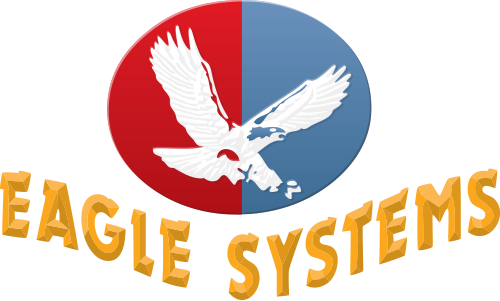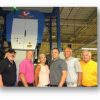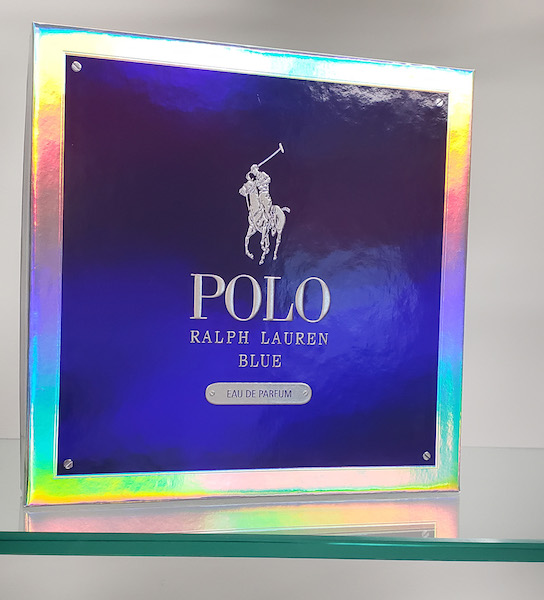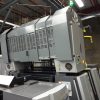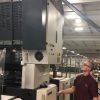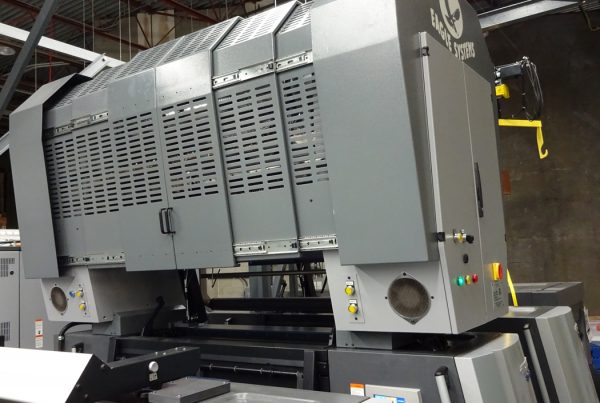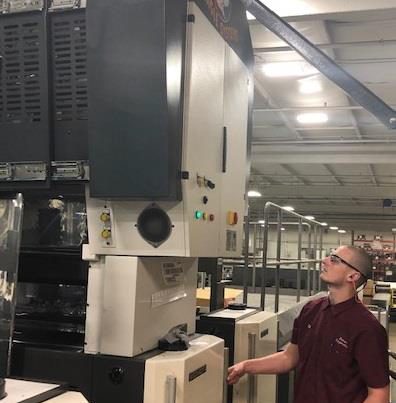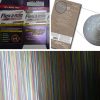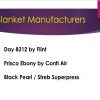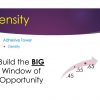In the sheet-fed production world, there are many ways to add a touch of foil to your packaging and commercial print jobs. One of the most notable ways to apply foil is with hot foil stamping that is most ideal when you have small, targeted areas of foil coverage. But when larger areas of foil coverage are desired, two additional options become a part of the conversation – laminated foil board and cold foil.
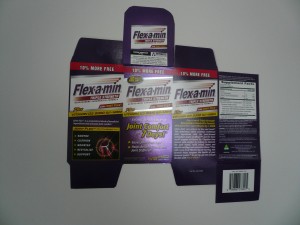
The Ins and Outs of Laminated Foil Board
Purchasing laminated foil board, also known as met poly, for packaging production is a common practice among many of the companies we’ve worked with throughout the years…particularly those working in high volume packaging production.
The sheets of metallic poly make quite a complex substrate. The base board has an adhesive that is applied so that a polyester film with aluminum backing can be adhered. A high gloss coating is applied to the polyester film before the aluminum to boost the shine, and the sheet is laminated to ensure all the components stick together throughout the production process.
To produce projects with laminated foil board, an opaque ink – most often white is printed over any area that the metallic effect is unwanted. Depending on the project, this could require multiple hits of white per sheet to ensure the metallic is completely masked where desired. Even with these multiple hits, the white is never truly white, as it results in more of a grey color.
For projects like tooth paste boxes, you are selling white teeth with grey boxes. A lot of these same boxes require very small type to list the ingredients of the product. When looking at these areas most of are illegible. With cold foil, you’re able to reverse out type as small as 3pt, and you can be sure the copy is readable. Under a loop, you can truly see the difference as the opaque colors tend to smear or spread out to a blur.
Additionally, for projects requiring folding and gluing – the met poly sheets require an additional treatment be applied so that the glue has something to grip on to in the converting process. Another expensive hindrance in the use of met-poly.
Cost-Savings with Cold Foil
A cost-effective alternative to met poly when high foil coverage is desired is to use a cold foil application. By keeping the foil in-line, you’re able to apply foil and print in a single pass. This opens the door to creating multiple colors of foil by simply overprinting the foil as it passes through the press, and the coverage allows you to maximize the use of your foil by using narrow webs, or ribbons, of foil .
Where cold foil can really benefit packaging manufacturers is in the cost-savings opportunities it presents. One way is by simply comparing the costs of the met poly to the costs of cold foil.
A couple years ago, it was not uncommon to see laminated foil board costs anywhere from $2 per sheet for low volumes under 1 million sheets per year, down to $0.60 a sheet for high volumes ranging from 1 to 10 million 28” x 40” sheets per year. That same project using cold foil would cost $0.27 for full coverage foil and adhesive, plus an additional $0.20 for the high-end board used in production. That cuts the cost per sheet down to $0.47, and results in a large amount of savings in the long run. Just think if you were to buy even 10 million sheets, this would equal a savings of $1,300,000!
Cold foil also offers great flexibility on press. With met poly, you’re forced to utilize the entire sheet for your project; however, in cold foil you have the opportunity to run variable narrow webs or ribbons of foil – cutting your hard foil cost per sheets down strategically.
For example, the cost to cover a 28” x 40” area would cost $0.27 to apply adhesive and cold foil per sheet. But if you’re covering only half that area – you cut your costs down to $0.135 a sheet. Equally, if you cut it down to 25% of the sheet, you could be at $.0675 per sheet. Those savings really add up!
Lastly, when you’re worried about the environmental impact of your production processes, cold foil wins against metallic poly hands-down. While projects produced with cold foil are 100% recyclable, laminated foil board poses many challenges in the recycling process and cannot be recycled or reclaimed.
Why Would You Choose One or the Other Today?
Just a few years ago met poly had a higher shine, while cold foil still had a grainy look to it. The foil was not even accepted when competing against met poly.
Today, however, the shine is there, and cold foil competes directly against met poly. As we stated earlier, the whites and opaque areas are clearer and crisper with cold foil because it is printed directly on the board. If one makes their own met poly in-house, the process is most times a big bottle neck because production speeds are maximum 3000 sheets per hour (sph).
In-line cold foil applications are compatible with press speeds ranging all the way up to the fastest press of 20,000 sph, however the real world of printing run average 10,000sph to 14,000sph at most.
Met poly manufacturers acknowledge Cold Foil as competition these days as well. Many suppliers have come way down in price, by as much as 75% of their original pricing, to compete with cold foil. Even still, cold foil is often the most economical option by far when you include logistics and flexibility into the equation.
Consider the percentage of the sheet needed to achieve the desired foil coverage. The reality of what is used and needed is a non- competitive issue against met poly. Most met poly packages are fully covered and used on all sides with the shine because it is less expensive to use than covering large areas with opaque inks. But when presented on the shelf, most customers only see the front and maybe the tops of the boxes. We educate brand buyers how to cost-effectively get the same shelf impact, but avoid the increased cost of adding foil to places that won’t be seen when consumers walk down the aisle. And let’s not forget the brilliance cold foil can bring to their whites.
Interested in Learning More?
Contact us today to discuss how switching from met poly to a cold foil system can benefit your business.
